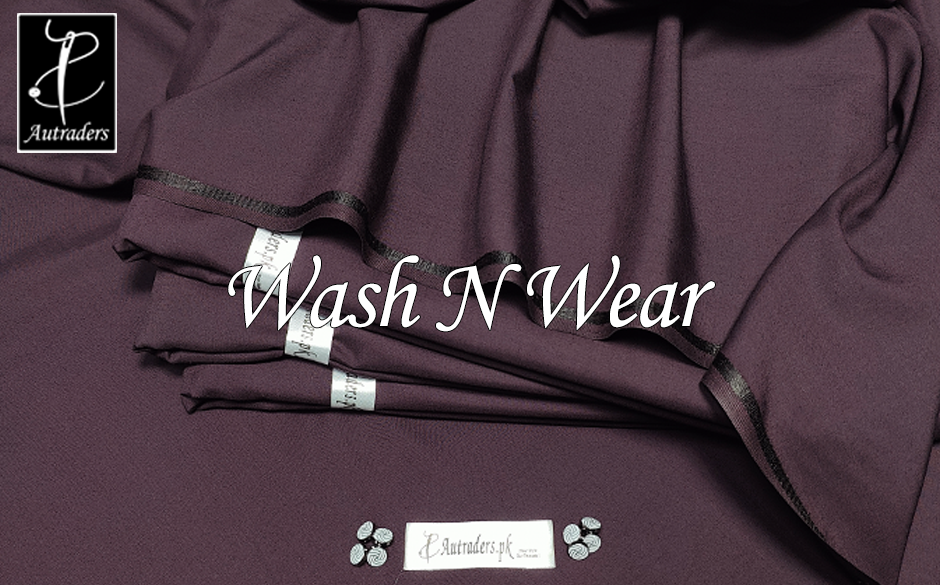
The Ultimate Guide to Wash-and-Wear Fabrics: What You Need to Know
Share
In today's fast-paced world, convenience and efficiency are paramount, especially when it comes to maintaining our wardrobes. Enter wash-and-wear fabrics, a game-changer for anyone looking to simplify their clothing care routine without sacrificing style or comfort. But what exactly are wash-and-wear fabrics, and why are they becoming increasingly popular? This article delves into the fascinating world of wash-and-wear fabrics, exploring their benefits, types, and care tips to help you make the most of this innovative textile technology.
What Are Wash-and-Wear Fabrics?
Wash-and-wear fabrics are textiles engineered to require minimal maintenance. Designed to resist wrinkles, stains, and fading, these fabrics allow you to wear clothes straight from the dryer or even straight from the washing machine, making them ideal for busy lifestyles. The term "wash-and-wear" refers to the convenience of washing these fabrics at home without needing to iron or dry clean them.
Key Features of Wash-and-Wear Fabrics
-
Wrinkle Resistance: Wash-and-wear fabrics are designed to resist creases and wrinkles, meaning you can skip the ironing step after washing. This feature is particularly beneficial for travelers or professionals who need to maintain a polished appearance with minimal effort.
-
Durability: These fabrics are often made from synthetic fibers or blended with natural fibers to enhance durability. They withstand frequent washing and wearing, making them a long-lasting investment for your wardrobe.
-
Stain Resistance: Many wash-and-wear fabrics have built-in stain-resistant properties, which help repel spills and stains. This quality helps keep clothes looking fresh and clean with less frequent washing.
-
Color Retention: Wash-and-wear fabrics are engineered to hold their color over time. They resist fading, so your clothes look vibrant even after multiple washes.
Types of Wash-and-Wear Fabrics
Understanding the different types of wash-and-wear fabrics can help you choose the best options for your needs. Here are some popular varieties:
1. Polyester
Polyester is a widely used synthetic fiber known for its wash-and-wear properties. It is wrinkle-resistant, durable, and colorfast, making it a popular choice for both casual and formal wear. Polyester garments often require minimal care, and they dry quickly after washing.
2. Nylon
Nylon is another synthetic fiber that offers excellent durability and wrinkle resistance. It is also water-resistant and quick-drying, making it ideal for activewear and outerwear.
3. Acrylic
Acrylic fabric is a soft, lightweight alternative to wool. It is resistant to wrinkles and fading, and it often mimics the look and feel of natural fibers while being easier to care for.
4. Blended Fabrics
Blended fabrics combine natural fibers like cotton with synthetics like polyester or nylon. These blends capitalize on the benefits of both types of fibers, offering the softness of cotton with the durability and low-maintenance features of synthetics.
5. Spandex/Lycra
Spandex, also known as Lycra, is famous for its elasticity. When blended with other fibers, it enhances the fabric's flexibility and shape retention, making it a popular choice for activewear and form-fitting garments.
How to Care for Wash-and-Wear Fabrics
Although wash-and-wear fabrics are low-maintenance, proper care can extend their lifespan and ensure they stay looking their best. Here are some tips for caring for these fabrics:
1. Follow Care Labels
Always check the care labels on your garments for specific instructions. While wash-and-wear fabrics are generally easy to maintain, following the manufacturer's guidelines will help prevent damage and preserve the fabric’s features.
2. Use Gentle Detergents
Opt for mild detergents to avoid stripping away the fabric's protective coatings. Harsh chemicals can weaken fibers and diminish the fabric's wash-and-wear properties over time.
3. Avoid Overloading the Washer
Overloading the washing machine can prevent clothes from getting a thorough clean and may cause excessive friction, which can lead to wear and tear.
4. Dry Appropriately
Most wash-and-wear fabrics can be tumble-dried on a low setting. However, air-drying is a good option for extending the life of your garments and avoiding potential heat damage.
5. Store Properly
Store wash-and-wear garments in a cool, dry place. Avoid direct sunlight and humid conditions to prevent any potential damage to the fabric over time.
The Future of Wash-and-Wear Fabrics
As technology advances, the future of wash-and-wear fabrics looks promising. Innovations in textile engineering are likely to bring even more effective wrinkle-resistance, stain-repelling, and comfort-enhancing features to these fabrics. Sustainable practices are also becoming a significant focus, with an increasing number of eco-friendly wash-and-wear fabrics entering the market.
Manufacturers are exploring ways to make these fabrics more environmentally friendly, such as using recycled materials and developing processes that reduce water and energy consumption. The trend towards sustainability will likely play a crucial role in the evolution of wash-and-wear fabrics, offering consumers both convenience and conscience.
Conclusion
Wash-and-wear fabrics have revolutionized the way we approach clothing care. With their wrinkle resistance, durability, and ease of maintenance, they offer a practical solution for modern living. By understanding the types of wash-and-wear fabrics available and following simple care tips, you can enjoy the benefits of these versatile textiles and keep your wardrobe looking fresh and stylish.
Whether you’re a busy professional, a frequent traveler, or just someone who values convenience, incorporating wash-and-wear fabrics into your wardrobe can make a noticeable difference in your clothing care routine. Embrace the future of fashion with wash-and-wear fabrics and experience the perfect blend of practicality and style.
